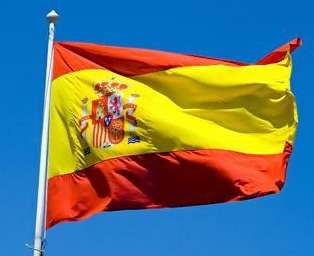
|
A Bortermelés története Spanyolországban A régészeti és történelmi kutatások bizonyítják, hogy az ibériai bor eredete több mint háromezer éves múltra tekint vissza. A szőlőkultúra megteremtésében a föníciai kereskedőknek a legnagyobb az érdeme, akik a félsziget dél-nyugati partjainál a környező hegyek lejtőin meghonosították a szőlőtermelést. A kereszténység terjedésével az egyház egyre nagyobb szerepet kapott a termelési ág fejlesztésében. Ebben az időben a spanyol borok a legkeresettebb árucikkek közé tartoztak az egész mediterrán vidéken. A mór megszállás ideje alatt a szőlőtermesztés fejlődése lelassult, de nem szűnt meg. A katolikus királyság visszaállítása után a szőlő- és bortermelés új lendületéről adtak hírt a krónikák. A múlt század közepén a szőlőskerteket megtizedelő filoxérajárvány majd az 1936-os polgárháború következtében a bortermelés hanyatlásnak indult. A II. világháború után az egész kontinensen stagnált a bortermelés és kereskedelem. Az 1950-es években a növekvő minőség és mennyiség mellett az export piacok is újraéledtek. A helyi borvédő egyesületek hivatalos elismerést nyertek és elindult az ágazat szabályozása. Jelenleg folyamatos fejlődés jellemzi a szőlő és bortermelést, mely kiválóan szervezett, jól működő származás- és eredetvédelmi rendszerben folyik.
A spanyol borászat Spanyolország Európa legnagyobb szőlőskertje. 1,2 millió hektárnyi területet borítanak szőlőtőkék. Országszerte közel 630.000 szőlőtermesztő gazdaság működik, ahol minden évben 30 millió hektoliter bor készül. A szőlőtermesztés feltételei az eltérő adottságok miatt rendkívül változatosak, mások az ültetvények és a termesztési eljárások. A jól gondozott szőlőültetvények 600-700 méterrel a tengerszint fölött, magas hegyektől védett lankákon, fennsíkokon helyezkednek el. Nagyon sok helyi fajta mellett számos, közismert világfajtát is termesztenek. A spanyolok technikailag jól felszerelt borászatot folytatnak. A hírnevüket megalapozó hagyománytisztelet ápolása mellett a legkorszerűbb igényeket is kielégítő fejlesztéseket hajtják végre. A borkészítés alapja a jól beérett etrmés, amit a kíméletes feldolgozás, a magas színvonalú borkezelés és ellenőrzött érlelés követ.
A Spanyol bortermő területek Alella Alicante Almansa Ampurdán Bierzo Binissalem Calatayud Campo De Borja Carinena Chacoli de Guetaria Chacoli de Nuelva Costers del Segre El Nierro Jerez-Xeres-Sherry Jumilla La Mancha Lanzarote Málaga Medina del Campo Méntrida Monterrei Montilla-Moriles Navarra Penedés Priorato Rias Baixas Ribeira Sacra Ribeiro Ribera del Duero Ribera del Guadiana Rioja Rueda Somontano Tacoronte-Acentejo Tarragona Terra Alta Toro Utiel-Requena Valdeorras Valdepenas Vinos de Madrid Yecla
Az eredetmegjelölés szabályozása 1938-ból származik az első spanyol bortörvény, mely magába foglalta az eredetmegjelölés fogalmát. Az erdetmegjelölési rendelet alapvető normatívákat tartalmaz egy-egy területre vonatkozóan. Tartalmazza a terület lehatárolását, a termeszthető fajtákat s szőlőtermesztés fenológiai fázisok szerinti szabályozását, a maximális megengedett hozamot, a minimális természetes alkohol tartalmat, a feldolgozási előírásokat. Az erdetmegjelölés legnagyobb egysége a borvidék, melyből Spanyolországban 46 található. Intézményrendszerében a legnagyobb szervezet az INDO ( Országos Eredetvédelmi Intézet), mely kezdetben autonóm szervezet, majd 1985-től a Mezőgazdasági, Halászati és Élelmezésügyi Minisztérium főosztálya. Tartományi szinten az Eredetmegjelölést Szabályozó Tanácsok feladata a termelés és a minőség szabályainak kialakítása, az ellenőrzés, a minősítés és a termelők nyilvántartása.
Borminőségi kategóriák: Vino De Finca Vino De Pago D.O.Ca. D.O. Vino De Calidad Con Indicación Geográfica (I.G.) Indicación Geográfica Vinedos De Espana Vino De La Tierra (V.T.) Vino De Mesa |
|
The history of wine production in Spain Archeological and historical research has proven that the origin of Iberian wine goes back to more than three thousand years in the past. The Phoenician traders have the most important merit in the creation of viniculture, who established viniculture on the slopes of the surrounding mountains, at the south-west coast of the peninsula. With the spreading of Christianity, the church had a more and more important role in the development of the branch. Those days, Spanish wines were among the items most sought after in the entire Mediterranean. During the moor occupation, the development of viniculture slowed down, but it did not stop. Following the re-establishment of the Catholic kingdom, chronicles had announced a new impetus of viniculture and wine production. In the middle of the last century, wine production had begun a decline as a result of the phylloxera epidemic severely damaging the vineyards and then the civil war in 1936. After World War 2 wine production and trade had been stagnating on the entire continent. In the 50’s parallel with improving quality and increasing quantity, the export markets had their revival as well. Local wine-protecting associations had gained official respect, and regulation of the branch had begun. At present grapes and wine production is in the state of continuous growth, which is carried out in the framework of a very well-organized, well operating system of origin protection.
The Spanish wine production Spain is the biggest vineyard of Europe. An area of 1.2 million hectares is covered with vine-stocks. There are nearly 630,000 vinery enterprises run all over the country, in which 30 million hectoliter of wine is produced every year. The conditions of vine growing are very variable because of the different circumstances, the plantations and growing methods are different. The well-cultivated vine plantations are located on gentle slopes or plateaus protected by high mountains, 600-700 meters above sea level. Besides a lot of native breeds, many well-known world-breeds are grown here as well. The Spaniards run a technically well-equipped viniculture. Parallel with the honor of traditions founding their reputation, they carry out developments and improvements meeting the most up-to-date demands. The basis of wine making is the ripened yield, which is followed by careful processing, high-level wine treatment and controlled mellowing.
The Spanish wine regions Alella Alicante Almansa Ampurdán Bierzo Binissalem Calatayud Campo De Borja Carinena Chacoli de Guetaria Chacoli de Nuelva Costers del Segre El Nierro Jerez-Xeres-Sherry Jumilla La Mancha Lanzarote Málaga Medina del Campo Méntrida Monterrei Montilla-Moriles Navarra Penedés Priorato Rias Baixas Ribeira Sacra Ribeiro Ribera del Duero Ribera del Guadiana Rioja Rueda Somontano Tacoronte-Acentejo Tarragona Terra Alta Toro Utiel-Requena Valdeorras Valdepenas Vinos de Madrid Yecla
Regulation of the designation of origin The first Spanish wine act originates from 1938, which included the definition of the designation of origin. The regulation on designation of origin contains fundamental norms about each region. It contains the borders of the region, the breeds that can be grown, and the regulation of vine growing according to phonologic phases, the maximum allowed yield, the minimum natural alcohol content, the rules of processing. The largest unit of the designation of origin is the wine region, of which 46 can be found in Spain. In terms of institutional system, the largest organization is the INDO (National Institute of Origin Protection), which was an independent organization originally, and then, since 1985, it is a Chief Department of the Ministry of Agriculture, Fishery and Catering. On province level it is the task of the Origin Designation Regulating Councils to create the rules of production and quality, control, qualification (labeling) and the registration of producers.
Wine quality categories: Vino De Finca Vino De Pago D.O.Ca. D.O. Vino De Calidad Con Indicación Geográfica (I.G.) Indicación Geográfica Vinedos De Espana Vino De La Tierra (V.T.) Vino De Mesa |
|
Historia de la Vitivinicultura en España
Las investigaciones arqueológicas e históricas han demostrado que el origen del vino ibérico cuenta con una historia de más de 3000 años. El mayor mérito en establecer la cultura de la vid se confiere a los comerciantes fenicios que introdujeron el cultivo de la uva en las laderas de las montañas que rodean el litoral sudoccidental de la península. Con la expansión de la religión cristiana la Iglesia obtuvo un papel cada vez más importante en el desarrollo de la producción. En aquellas épocas el vino español era uno de los artículos más solicitados de todo el Mediterráneo. Durante la ocupación árabe el desarrollo de la viticultura se ralentizó pero no desapareció. Tras la Reconquista las crónicas anunciaron el nuevo impulso de la producción vitivinícola. Debido a la epidemia de filoxera, que arrasó con la mayoría de los viñedos a mediados del siglo XIX, y a la Guerra Civil de 1936, comenzó el declive de la fabricación de vino. Después de la Segunda Guerra Mundial la producción y el comercio del vino se estancaron en todo el continente. En los años 1950 junto con la cantidad y la calidad crecientes, los mercados de exportación resurgieron también. Las asociaciones locales creadas para proteger el vino han obtenido reconocimiento oficial y se ha puesto en marcha la regulación del sector vinícola. Actualmente la producción vitivinícola se caracteriza por una evolución constante que se lleva a cabo bajo un sistema eficaz de protección de origen.
La enología española
España es el mayor viñedo de Europa. Las viñas cubren una superficie de 1,2 millones de hectáreas. En todo el país funcionan, aproximadamente, unas 630000 fincas vitivinícolas donde se producen 30 millones de hectolitros de vino cada año. Las condiciones del cultivo de la vid son sumamente diversas gracias a las diferentes circunstancias, los viñedos y los métodos de producción son distintos. Los viñedos bien cuidados se encuentran en laderas suaves y mesetas protegidas por altas montañas, a 600-700 m sobre el nivel del mar. Además de muchos varietales autóctonos producen variedades internacionales de uva también. Los españoles tienen bodegas tecnológicamente bien equipadas. Unidos al prestigio, basado en el respeto y la conservación de las tradiciones, se realizan desarrollos que satisfacen hasta las más modernas necesidades. Los fundamentos de la elaboración de vino son el fruto maduro de la vid seguido por una manipulación delicada, procesos enotécnicos de alto nivel y una maduración controlada.
Comarcas vitivinícolas de España
Alella
Alicante
Almansa
Ampurdán
Bierzo
Binissalem
Calatayud
Campo De Borja
Cariñena
Chacolí de Guetaria
Chacolí de Nuelva
Costers del Segre
El Hierro
Jerez-Xérès-Sherry
Jumilla
La Mancha
Lanzarote
Málaga
Medina del Campo
Méntrida
Monterrey
Montilla-Moriles
Navarra
Penedés
Priorato
Rías Baixas
Ribeira Sacra
Ribeiro
Ribera del Duero
Ribera del Guadiana
Rioja
Rueda
Somontano
Tacoronte-Acentejo
Tarragona
Terra Alta
Toro
Utiel-Requena
Valdeorras
Valdepeñas
Vinos de Madrid
Yecla
Regulación de las denominaciones de origen
La primera ley del vino es de 1938 que incluía el concepto de la denominación de origen.
El decreto de la denominación de origen contiene las normativas básicas referentes a cada territorio. Comprende los límites del área, las variedades de uva que se puede producir, la regulación de la viticultura según las fases fenológicas, el rendimiento máximo permitido, el contenido mínimo de alcohol, las normas de elaboración. La unidad más grande de la denominación de origen es la región, en España en total se encuentran 46 lugares con denominación de origen. El INDO (Instituto Nacional de Denominación de Origen) es la organización más grande del sistema de instituciones, que al principio era un organismo autónomo y a partir de 1985 se ha convertido en una Subdirección General del Ministerio de Agricultura, Pesca y Alimentación. A nivel autonómico son los Consejos Reguladores de la Denominación de Origen que crean los reglamentos de producción y calidad, y los que llevan el registro de calificaciones y productores.
Categorías de la clasificación de vinos
Vino De Finca
Vino De Pago
Denominación de Origen Calificada (DOCa)
Denominación de Origen (DO)
Vino De Calidad Con Indicación Geográfica (IG)
Indicación Geográfica Viñedos De España
Vino De La Tierra (VdlT) Vino De Mesa |
